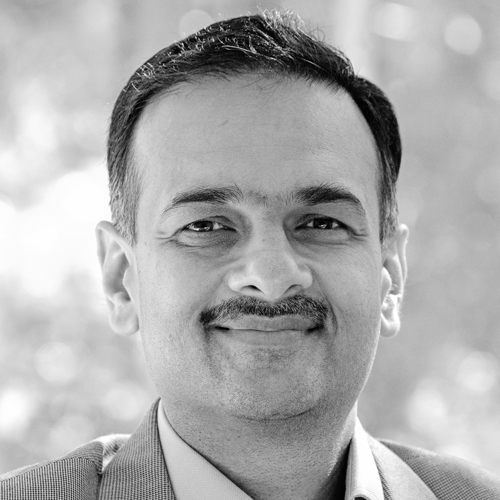For many people, the prospect of driverless cars is not only the next step in automotive technology, it’s also the future of transportation. For Toyota’s Wayne Powell, however, it carries a bit more weight.

“I had a daughter learning to drive several years ago, and I also had a father who was fiercely independent and didn’t want to stop driving,” Powell says. “The idea of developing cars that give people the mobility that they once had, or that they will soon have, is a powerful driver for me to do the work I’m doing.”
For Powell, the vice president of electronic systems at Toyota Motor Co., the potential of autonomous vehicles is vast and deeply intertwined with one of the car manufacturer’s chief concerns: safety. “It’s not tech for tech’s sake,” Powell says of the company’s work in this realm of technology. “Toyota’s very clear that we have a singular focus, and that’s to eliminate traffic deaths—period. All of this technology is a tool to get us there.”
Toyota has made tremendous strides in the field of vehicular safety in recent years. Virtually all of its current vehicles come integrated with the Toyota Safety System (TSS), a five-point system that works to prevent collisions and engage distracted drivers. Among its features is a pre-collision system that automatically applies the brakes when its sensor detects a possible crash, as well as lane departure warnings and an automatic cruise control feature that ensures drivers maintain a safe distance between other vehicles on the road.
“We’ve had people tell us the features make them a better driver,” Powell says. “They’re trying so hard to avoid warnings that their driving habits are changing.”
Powell also asserts that the key to preventing collisions isn’t eliminating the driver entirely. Instead, it’s about designing systems to augment the driver to make them better. That’s where Toyota’s current work with AI and machine learning comes in, and it’s in these features that Powell finds himself most excited, particularly when it comes to the Guardian system.

Still in development, this feature incorporates AI and machine learning to give drivers what Toyota describes as “a safety net.” Powell describes the system as being an “active partner” for the driver, one that acts only in the event of a potential collision or mishap. “The driver has good judgment and capabilities that automatic systems don’t have yet,” Powell says. “However, there are scenarios where the car can do better than the driver.” Machines don’t get tired, for example, nor are they deterred from poor weather conditions. “It’s about getting the driver out of trouble. That’s what Guardian is all about,” he adds.
That program, along with several others, is being fine-tuned by the Toyota Research Institute (TRI), a predevelopment team with whom Powell and his staff work with closely.
Powell is now in the process of taking these technologies and incorporating them into vehicles that customers can purchase and operate.
“How do you develop a car to sell? We know that. So, we’re helping TRI with making their concepts more complete,” Powell explains. “We’re responsible for getting cars on the road.”
Close collaboration is also key, he notes, as one of Toyota’s TRI locations is located just down the street from Powell’s office in Ann Arbor, Michigan. In the past, the majority of Toyota’s research and development took place in Japan, but Powell says that the company is moving some of that core development to North America. That includes the creation of new Toyota subsets such as Connected Technologies, a Texas-based organization that Powell says has taken over multimedia telematics development from the company’s headquarters in Japan. There, Toyota has a team that manages not only the vehicle side but also the cloud side to improve the overall customer experience.
And in the end, that’s because the customer matters more than the technology. “It was scary for me and my sister to think of my father out on the road,” Powell says. “So, the concept of a car that could protect him and protect those around him—and also give him the independence to go where he wants, when he wants, and still be safe—appeals
to me.”
Powell also says that younger drivers who “don’t yet have the skills to control cars in complex environments” will benefit from the “good habits” a system such as the Guardian can impart. “That’s a powerful tool that can make the world a better place,” he says.

Off the Clock with Wayne Powell
Along with several members of his team, Wayne Powell is an active volunteer with the Ann Arbor chapter of Habitat for Humanity, a charity organization committed to providing and building affordable housing for the community.
Every summer, he and his team, along with other R&D members, spend about fourteen Saturdays building houses. While there’s no set method for how volunteers approach these projects, Powell says the Toyota team adopted the collaborative methods they learned at Toyota to divvy up teams, assign leaders, and assign tasks to the most qualified volunteers. As such, they streamlined operations so much so that Habitat for Humanity discovered it would need only eleven Saturdays rather than fourteen to complete the work.
“It wasn’t what we set out intending to do,” Powell says. “We were just applying what we know how to do as Toyota people, and it really paid off. But now it’s a challenge. We have to get it down to ten days.”
Photos: Gillian Fry

